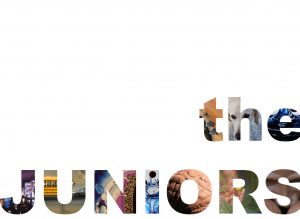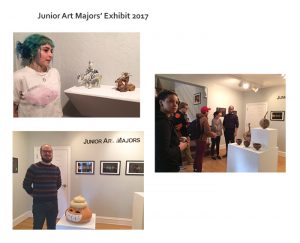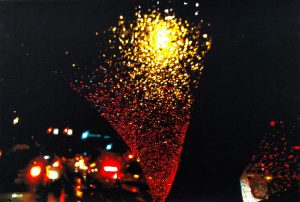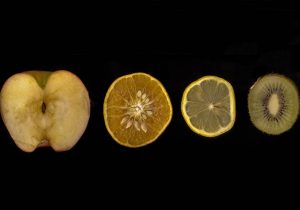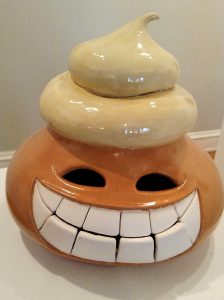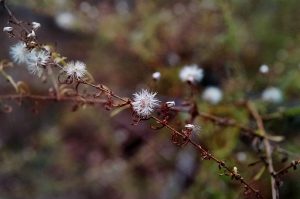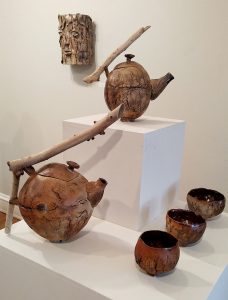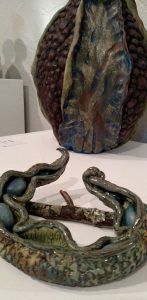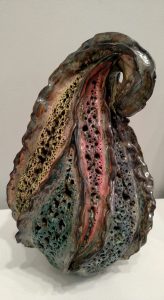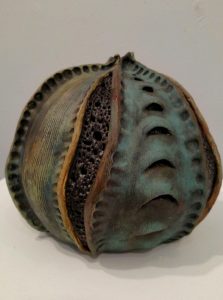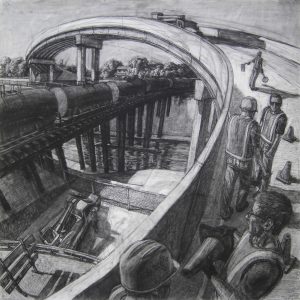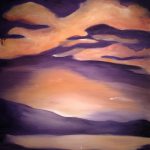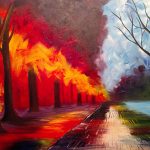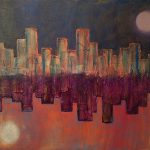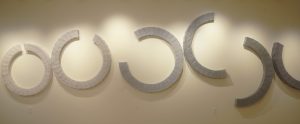The senior art majors spent the past four years honing their artistic skills and finding ways to use their art to express their ideas formally to the world. This exhibition is a culmination of their hard work, soul-searching, and artistic development during their time at Saint Joseph’s University.
Jesse Buxton, Krista Jaworski, Katherine Lord and Colin Mallee are exhibiting work that is varied not only in medium, but also in style and ideology. These young artists deftly meld influences from personal struggles, life experiences, artistic research, and the work of a wide range of ancient to contemporary artists.
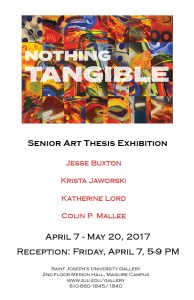
K A T H E R I N E L O R D
_________________________________________________
My work is a reflection of myself and experiences I have had throughout life. I take materials I find to be satisfying and work with them to create pieces. I enjoy the process of taking something that is “nothing” and making it in to something. Typically I reflect on whatever thought has caught my attention, and transfer the thought to expression. This causes my work to be mostly abstract with a common theme of figurative undertones. The process of reflection and then translation in to creating is a very therapeutic process for me. In a way, you could say art is my own personal therapy. I take what I see, experience, and hear about and process it through creating and making work.
Common subjects of my work are things that have impacted my life severely, good and bad. I find strength in my family, and although a large portion of my work reflects traumatic experiences I have had in my life, there is always an undertone of strength. That strength being to overcome tragedy and find beauty in it. I find beauty in pain. There is a distinct moment when a person chooses how they will be effected by something that has hurt them. That moment is when one chooses to accept what had happened and how it will impact their lives. I have chosen to find beauty in pain in everything I have ever experienced. This could be from a lack of choice. You have to deal with what you are handed, and this must be how I do that. I try to share this beauty with others around me so they can find strength and solace in it as well. As people, we are comforted by another understanding us, it is in a moment of relation that we are able to feel cared for and find strength. I want to share my strength and experience with as many people as possible and I do that in my work. That doesn’t mean I think my work will have that effect on everyone. I am successful if I am able to effect one person in a positive way. To make one person feel that they are not alone in their pain. My art is the way I choose to do this, and is the way I am capable of doing this.
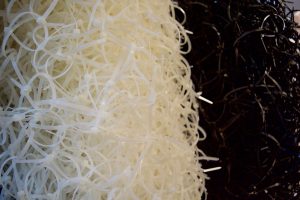
J E S S E B U X T O N
_________________________________________________
My strong interest in history informs my work in ceramics. The shards left behind act as physical evidence of ancient cultures. From pots left behind, we can learn how people used them for utilitarian purposes and also track aesthetic trends. I am interested in integrating features from historical vessels into a more contemporary context. My work is an expression of my experiences and taps into the material culture that has been created by those before me.
My contemporary influences include Carl Cunningham-Cole, Svend Bayer, and Ben Carter in his podcast Tales of a Red Clay Rambler, which introduced me to the close-knit clay community. As far as material culture from the antiquity, Greek and Roman pots have particularly held my interest. These pots have also impacted the forms that I create to a great extent. Specifically, the ancient Pithos, or storage jars associated with Greece from the Bronze and Iron ages that held food and store liquids are an exceptional display of technical achievement and necessary function. These massive forms make the audience wonder what is contained within and marvel at the sheer volume of the jars.
My process for making includes creating composite vessels, or vessels made up of many building blocks. This is done by using the wheel as a tool to create inventive features for traditional parts of a vessel. I am also experimenting with the Onggi method of throwing coils, allowing me to make larger work and presenting an intense technical challenge. These methods allow one to play with proportions and experiment with ancient Greek proportionate ideals. I aim to bring my own creative take on traditional notions of beauty and proportions. I strive to master the technical ability and blend historical references with my own artistic voice.
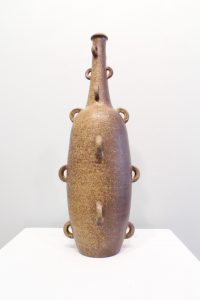
C O L I N M A L L E E
__________________________________________________
I found out I was good at art in my freshman year of high school. At the time I was very religious and I remember recalling a bible passage that went something along the lines of, “Whatever you are, strive to be the best at it.” Nowadays, I look at my art from a slightly different kind of view. Striving to be the best I can be, my work is now more personal. By that, I mean to say, my art is an inside joke with myself.
I like comic books both of the western and eastern variety. Much of the inspiration for my work and style comes from things like cartoons and anime. Stories of heroes drawn with thick outlines that seem to pop right off the page have always interested me. When making my art I like to incorporate many of the techniques involved in making comics and graphic novels such as line weight variation, strong, confident mark making, and dynamic angles.
Comic book artists and graphic novelists like Jim Lee, Alan Moore, and Frank Miller are some of my biggest inspirations. I admire their unique takes on the use of line and line weight variation as well as their employment of various shading techniques. I’ve also drawn some inspiration from more traditional artists like Roy Lichtenstein and Kehinde Wiley. Their particular use of vivid colors and attention to the human figure is what inspires me most about their work. The inspiration to add three dimensional elements to some of my pieces came both from a curiosity in expanding on what I could do on a canvas as well as a desire to blend my love for painting and drawing.
I’m not a political person and neither is my work. I make what I know and what I know best is what makes me happy. As an actor, especially in an ensemble performance, the most important rule is if you don’t look like you are enjoying yourself the audience won’t either. In this way, I hope my work shows how much care and delight goes into each piece. I’ll keep the punch line of my inside joke between me and my art, but I hope those who view my art will still smile along with us.
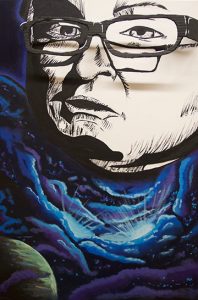
K R I S T A J A W O R S K I
__________________________________________________
Social media is admittedly a very large part of our lives. Our virtual worlds and reality are one and the same, yet the way people behave online and in real life are very different. I am fascinated by the way people have developed their lives alongside social media, and what it means in our society today. In everyone’s bubble of virtual media people are obsessed with creating a better image of themselves online and gaining arbitrary instant gratification. We’re often bombarded with this media, and sometimes peek into the real lives’ excessive thoughts and anxiety behind posting these forgetful images. It doesn’t matter.
In this show, I aim to bring these ideas to life with multiplicity of the most recognizable image: our own faces and digital icons. I’ve personified characteristics of social media and those who use it in my imagery.
I’ve mainly used a combination of acrylic paint, paint markers, and acetate layering. I wanted to replicate the feeling of my sharpie sketches, and transfer it to a different medium, so using the paint makers on canvas accomplished that.
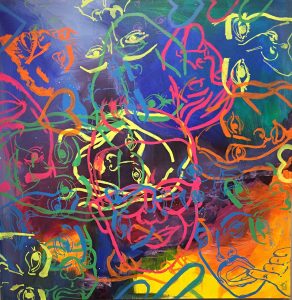
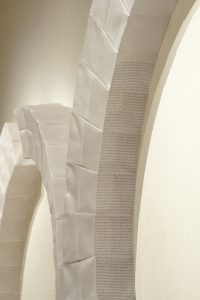 Silent Scream
Silent Scream
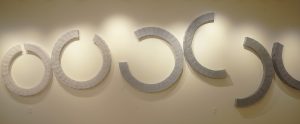
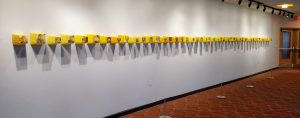
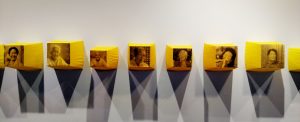 We, Survivors
We, Survivors
